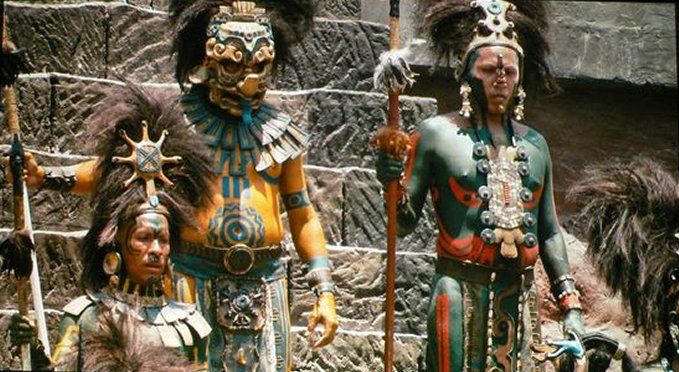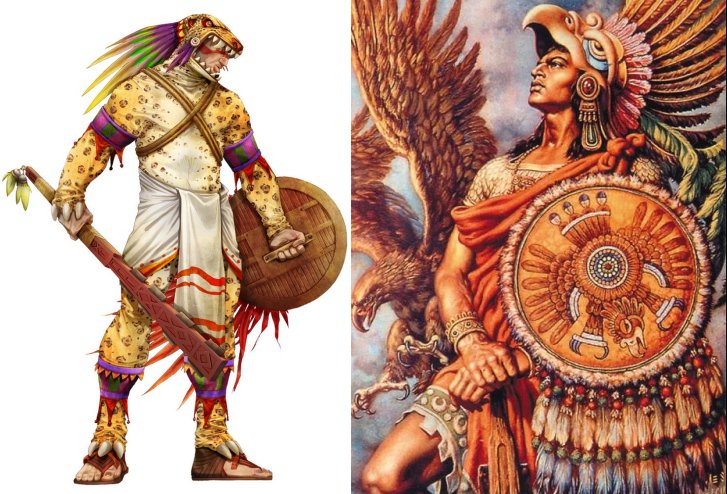Ancient History Of Body Modification In Mesoamerica Practiced By The Aztecs, Maya And Olmecs
A. Sutherland - AncientPages.com - To improve one’s body is something modern people do all the time and it should not come as a surprise that the ancient did the same, only for different reasons and they were often extreme in their practices of changing the natural look of a person’s body.
Body modification was very important to several ancient civilizations. In Mesoamerica the Aztecs, the Maya as well as the Olmecs practiced extensive body modification often for ritual or ceremonial purposes.
Aztecs believed that blood was very important because the spirit essence of man existed in his blood, which also explains all the blood sacrifices they performed. To the Aztecs, body alteration was also considered an important part of movement between major life stages.
Body modification was also a symbol of power among the Aztec rulers. Archaeologists have discovered ancient labrets that the Aztecs pierced through the lower lip. These labrets were in most cases made of gold and in the shape of a serpent.
Ancient Labret Piercing
Gold was considered a sacred and wearing a crafted from this material labret would have underscored the ruler’s divinely sanctioned authority and asserted his position as the individual who could speak for the Aztec Empire. The insertion of a labret was part of a ruler’s accession ceremony and it was worn not only on ritual occasions, but also on the battlefield. Its wearer was seen as a symbol of a serpent ready to strike its prey.

Labret, Serpent with Articulated Tongue (Aztec, 13th-early 16th century), gold, on view at the Metropolitan Museum of Art
Labret piercing was practiced among both men and women in the Aztec society and signified adulthood. Piercing was also done on lips and ears. On religious occasions, all piercing would be worn, and the face would stretch under the weight of such heavy metals.
Ancient Skeletal And Cranial Modifications
Other types of body alternations included skeletal and cranial modifications. Cranial modification was a procedure that took place at an early age, in most cased during infancy because the cranial bones are still soft at this stage and capable of morphing.
Using various methods the goal was to change the growth and shape of the skull. This is why archaeologists today find many skeletons with elongated and deformed skulls.
Ancient people of Mesoamerica also modified their teeth. Precious stones such as jadeite, pyrite, or turquoise were often placed into bored holes in the teeth.

Angel Ruíz Novelo, Portrait Head of the ruler K'inich Janaab Pakal II, based on the stucco portrait of the king found beneath his sarcophagus at Palenque, Chiapas
Some Aztec hieroglyphs depict gods with T-shaped teeth, but it is unclear whether this unusual practice was for religious or fashionable reasons. The Vikings for example also filed their teeth for unknown reasons.
Ancient Tattoos
Ancient tattoos were also popular.

These are examples of the tribal language of the Aztecs. These symbols are sometimes used in tattoos because of what each symbol represents, such as the power of the eagle or jaguar.
The most popular Aztec tattoos feature animals such as eagles, jaguars, frogs and monkeys. These are totem animals, also known as spiritual guides. When a person chooses an animal totem, it is because they feel a particular affinity for that animal and are inspired by the creature’s way of life.
The fearsome Aztec Eagle Warriors and Jaguar Warriors of Mesoamerica often had tattoos.
Skeletons with ancient tattoos are less commonly found than skeletal modifications because of the lessened likelihood of preservation.
The Aztecs also scarification practiced, the permanent and intentional marking of the skin causing scars, but this kind of body modification was relatively limited to the priestly caste in Aztec society.
Archaeologists often discover ancient remains with ear piercings, tattoos, stretched limbs, and other alterations which might look horrible to our modern society, but to the ancient people of Mesoamerica and other parts of the world, these were natural and necessary procedures.
Boyd modification was practiced worldwide.
Written by – A. Sutherland AncientPages.com Staff Writer
Copyright © AncientPages.com All rights reserved. This material may not be published, broadcast, rewritten or redistributed in whole or part without the express written permission of AncientPages.com
More From Ancient Pages
-
 Why Was Pharaoh Khafre Almost Wiped Out From Historical Records?
Featured Stories | Feb 19, 2020
Why Was Pharaoh Khafre Almost Wiped Out From Historical Records?
Featured Stories | Feb 19, 2020 -
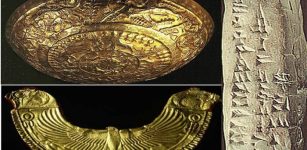 Forgotten Ancient Ugarit: One Of The Flourishing And Oldest Cities Of Canaan
Featured Stories | Jun 15, 2023
Forgotten Ancient Ugarit: One Of The Flourishing And Oldest Cities Of Canaan
Featured Stories | Jun 15, 2023 -
 More Than 10,000 Pre-Columbian Earthworks Remain Hidden Throughout Amazonian Forests
Archaeology | Oct 5, 2023
More Than 10,000 Pre-Columbian Earthworks Remain Hidden Throughout Amazonian Forests
Archaeology | Oct 5, 2023 -
 Starkad The Viking – Legendary Norse Hero Who Was Both Blessed And Cursed By Gods
Featured Stories | Jul 29, 2019
Starkad The Viking – Legendary Norse Hero Who Was Both Blessed And Cursed By Gods
Featured Stories | Jul 29, 2019 -
 Major Discovery Reveals Neanderthals In Italy Engaged In Plant Food Processing
Evolution | Jun 29, 2023
Major Discovery Reveals Neanderthals In Italy Engaged In Plant Food Processing
Evolution | Jun 29, 2023 -
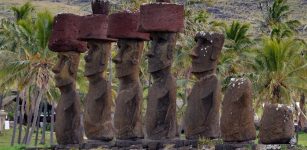 Timing Of Easter Island’s Societal Collapse – Revisited
Archaeology | Feb 7, 2020
Timing Of Easter Island’s Societal Collapse – Revisited
Archaeology | Feb 7, 2020 -
 Viking Women Were More Prominent Than Previously Thought – Archaeological Discoveries Reveal
Archaeology | Sep 6, 2019
Viking Women Were More Prominent Than Previously Thought – Archaeological Discoveries Reveal
Archaeology | Sep 6, 2019 -
 Aglaonice (Aganice): Female Greek Astronomer From Thessaly Was Believed To Be A Witch
Featured Stories | Sep 4, 2019
Aglaonice (Aganice): Female Greek Astronomer From Thessaly Was Believed To Be A Witch
Featured Stories | Sep 4, 2019 -
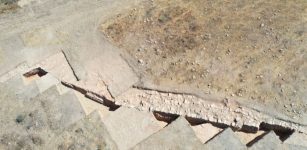 Hidden Mega-Monument Discovered At Laona, An Ancient Burial Mound In Cyprus
Archaeology | Aug 15, 2022
Hidden Mega-Monument Discovered At Laona, An Ancient Burial Mound In Cyprus
Archaeology | Aug 15, 2022 -
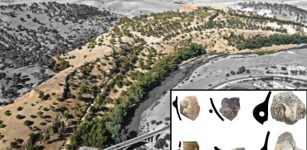 Evidence Of An Unknown Neolithic Society At Oued Beht In North Africa Discovered
Archaeology | Sep 30, 2024
Evidence Of An Unknown Neolithic Society At Oued Beht In North Africa Discovered
Archaeology | Sep 30, 2024 -
 Marriage And Divorce In Ancient Egypt Were Different But Uncomplicated
Ancient History Facts | Dec 12, 2018
Marriage And Divorce In Ancient Egypt Were Different But Uncomplicated
Ancient History Facts | Dec 12, 2018 -
 Gigantic Ancient Palace Unearthed In Mexico’s Valley Of Oaxaca
Archaeology | Mar 29, 2017
Gigantic Ancient Palace Unearthed In Mexico’s Valley Of Oaxaca
Archaeology | Mar 29, 2017 -
 Death Of Norse God Balder And Loki’s Mischief That Led To Destruction In Ragnarok
Featured Stories | Nov 15, 2016
Death Of Norse God Balder And Loki’s Mischief That Led To Destruction In Ragnarok
Featured Stories | Nov 15, 2016 -
 Oldest Writing System Among Slavs To Be Germanic Runes – New Study
News | Feb 15, 2021
Oldest Writing System Among Slavs To Be Germanic Runes – New Study
News | Feb 15, 2021 -
 Rare Well-Preserved Viking Artifacts Lost On Mountain Pass – Revealed By Retreating Glaciers
Archaeology | Apr 16, 2020
Rare Well-Preserved Viking Artifacts Lost On Mountain Pass – Revealed By Retreating Glaciers
Archaeology | Apr 16, 2020 -
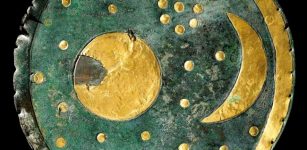 Nebra Disc – Artifact That Represents 3,600-Year-Old Astronomical Knowledge
Artifacts | May 26, 2014
Nebra Disc – Artifact That Represents 3,600-Year-Old Astronomical Knowledge
Artifacts | May 26, 2014 -
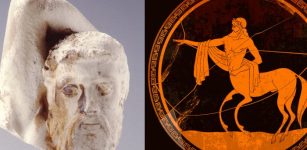 Why Is This Centaur Head A Scientific Mystery?
Archaeology | Jan 19, 2024
Why Is This Centaur Head A Scientific Mystery?
Archaeology | Jan 19, 2024 -
 Unique Tomb Of Roman Noblewoman Caecilia Metella Reveals Secrets Of Ancient Concrete Resilience
Archaeology | Oct 14, 2021
Unique Tomb Of Roman Noblewoman Caecilia Metella Reveals Secrets Of Ancient Concrete Resilience
Archaeology | Oct 14, 2021 -
 The Unicorn In The Bible Was An Oryx – Ancient Translation Mistake
Ancient History Facts | Apr 24, 2018
The Unicorn In The Bible Was An Oryx – Ancient Translation Mistake
Ancient History Facts | Apr 24, 2018 -
 Ancient Tombs Of The Nobles In The Valley Of The Queens
Featured Stories | Oct 23, 2016
Ancient Tombs Of The Nobles In The Valley Of The Queens
Featured Stories | Oct 23, 2016

